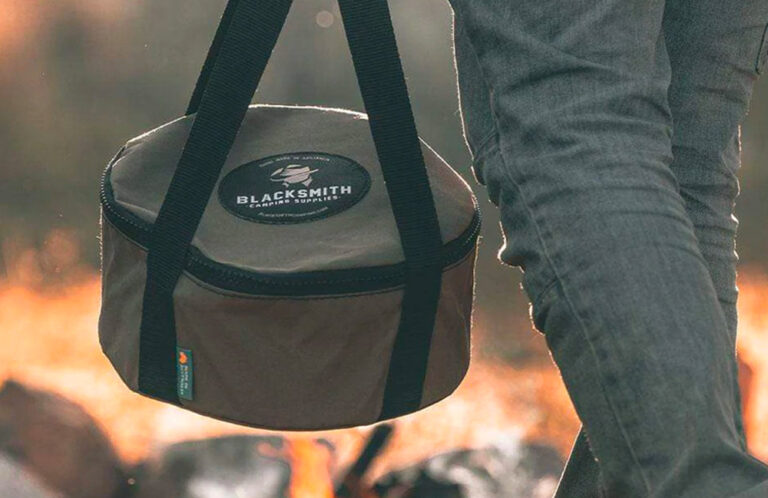Restoring a rusty camp oven
There’s something special about cooking over an open flame in the great outdoors, and a trusty cast iron camp oven is an essential tool for those unforgettable camping meals.
However, over time, exposure to moisture and the elements can lead to the pesky problem of surface rust.
Don’t worry! The good news is that restoring a rusty camp oven to its former glory is a relatively simple process that will have you cooking up delicious meals in no time.
In this comprehensive guide, we’ll walk you through the steps to remove the rust and re-season your camp oven, ensuring it’s ready for your next outdoor adventure.
So, dust off that cast iron gem, and let’s get started on rejuvenating your camp cooking memories!
Here’s a step-by-step guide to restoring a rusty camp oven
Guide to Restoring a rusty camp oven
- Remove the rust: Start by scrubbing off the surface rust using steel wool or a stiff brush. Scrub the affected areas until the rust is completely removed. See more methods to remove rust below
- Rinse and dry: Thoroughly rinse the camp oven with water to remove any rust particles and vinegar residue. Then, dry it completely using a towel or by placing it over low heat on a stovetop or in an oven.
- Apply oil: To prevent further rusting and protect the cast iron, apply a thin layer of cooking oil or vegetable shortening to the entire surface of the camp oven, including the inside and outside. Make sure to cover every nook and cranny.
- Season the oven or hooded BBQ: Preheat your oven to around 350°F (175°C). Place the camp oven upside down on the oven rack or a baking sheet lined with aluminium foil to catch any drips. Bake it for about one hour. This process allows the oil to polymerize, forming a natural non-stick coating.
- Cool and repeat: Once the hour is up, turn off the oven and let the camp oven cool down completely inside. You can repeat the seasoning process (steps 3-5) a few more times if desired, as multiple layers of seasoning can enhance the non-stick properties and durability of the cast iron.
After completing these steps, your camp oven should be restored and ready to use again. Remember to keep the oven well-seasoned by using it regularly and applying a light coat of oil after each use to prevent rust from reoccurring.
Tip: you can prevent your oven from rusting if you correctly store it, see our guide here
Methods to remove rust from a Rusty Camp oven
- Steel wool or wire brush: Scrub the rusted areas using steel wool or a wire brush. This method mechanically removes the rust by scrubbing it off the surface of the cast iron. Make sure to scrub gently to avoid damaging the seasoning or the cast iron itself.
- Vinegar and water: Create a solution of equal parts white vinegar and water. Soak the rusted areas of the camp oven in the solution for a few hours or overnight. The acidity of the vinegar helps dissolve the rust. After soaking, scrub the rust off with a brush or steel wool, rinse with water, and dry thoroughly.
- Electrolysis: This method requires more equipment and can be more involved but is highly effective at removing rust. It involves creating an electrolytic bath using a container, a sacrificial piece of metal (like rebar), and a battery charger. The rusted camp oven acts as the anode, and the rust is converted back to iron. This method requires careful research and adherence to safety guidelines.
- Sanding or grinding: For more stubborn rust, you can use sandpaper or a grinding wheel to remove the rust. This method is more abrasive and should be used with caution to avoid removing too much metal. It is recommended for severe rust or when restoring older cast iron items.
- Molasses bath: Create a mixture of 1 part molasses and 9 parts water in a container large enough to submerge in the camp oven. Soak the rusted camp oven in the mixture for a few days or up to a week. The enzymes in molasses help break down the rust. Afterwards, scrub off the rust using a brush or steel wool, rinse, and dry thoroughly.
Remember, after removing rust, it’s crucial to re-season your cast iron camp oven to protect it from further rusting and maintain its non-stick properties.




